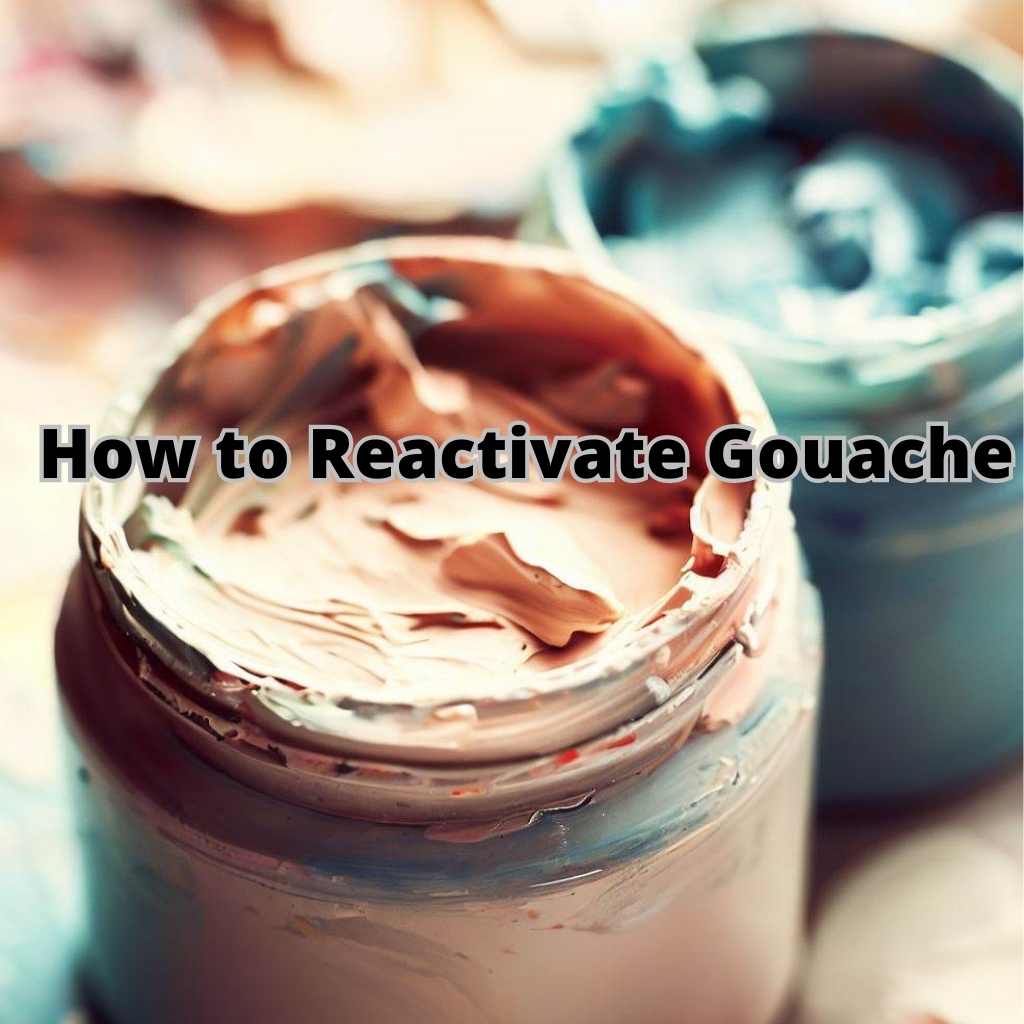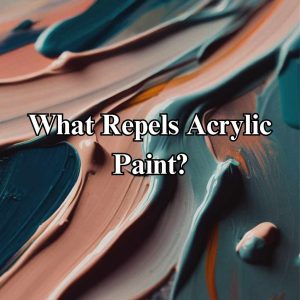Gouache, known for its rich opacity and smooth application, often dries out if left unused for extended periods.
However, unlike other paints, gouache’s water-soluble nature allows it to be revived and reused.
Whether you are a seasoned artist or a beginner exploring this medium, learning how to reactivate gouache can save you both time and money, ensuring your colors remain as vivid and workable as the day you first opened them.
This guide will provide you with practical steps and tips to efficiently restore your gouache paints to their original consistency, ready for your next artistic endeavor.
Preparing to Reactivate Gouache
Before you can reactivate your gouache, you need to prepare your workspace and gather your supplies. Here are the steps you should follow:
Gather Supplies
To reactivate the gouache, you will need a few basic supplies. These include:
- Dried-out gouache paint
- Water
- Paint palette
- Paintbrushes
- Glycerin (optional)
- Gum arabic (optional)
Set Up Paint Palette
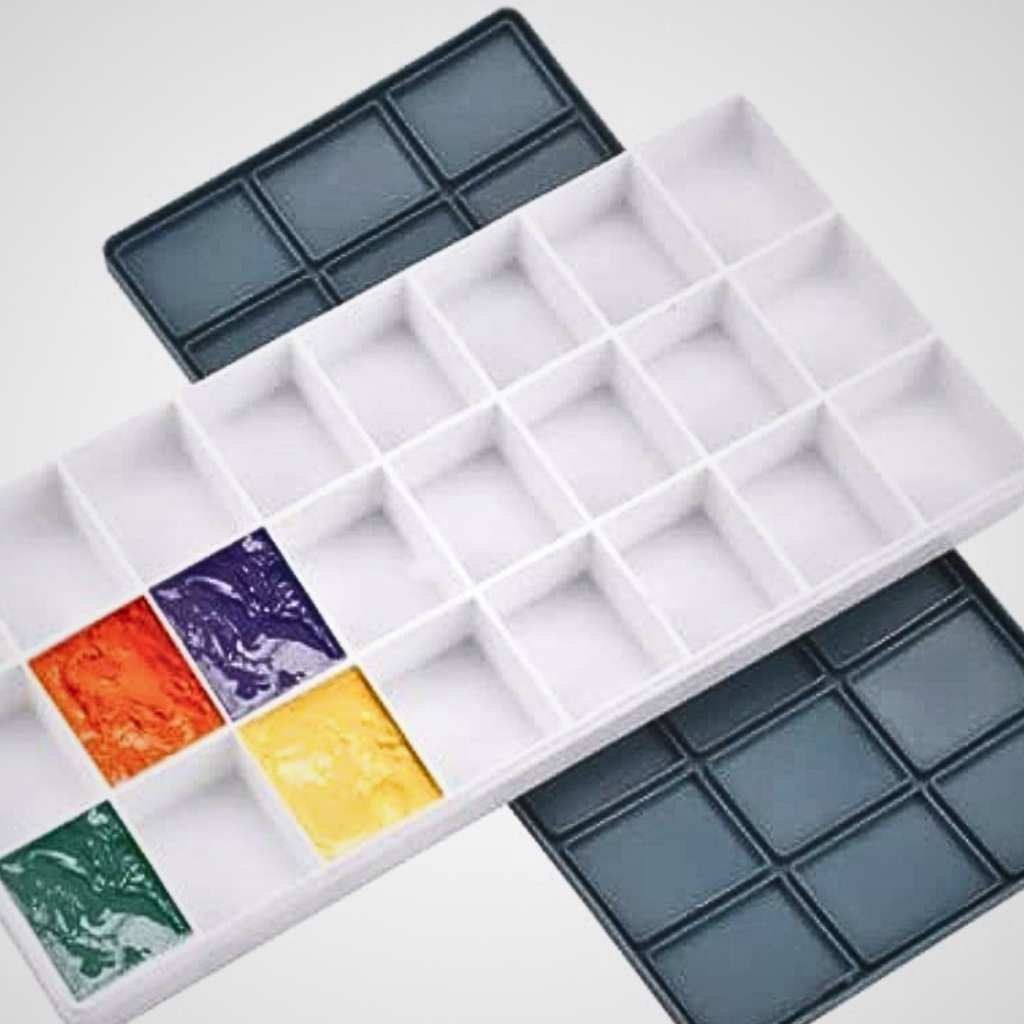
To reactivate your gouache, you will need to set up your paint palette. Fill the wells with water and place a small amount of your dried-out gouache in each well. You can also mix your colors ahead of time, so you don’t have to stop and mix while you’re painting.
How to Reactivate Gouache: 3 Different Methods
There are several different methods you can use to reactivate your gouache. Here are the most common methods:
Method 1: Using Water
Using water is the most common way to reactivate gouache. To reactivate the gouache using water, follow these steps:
Steps to follow:
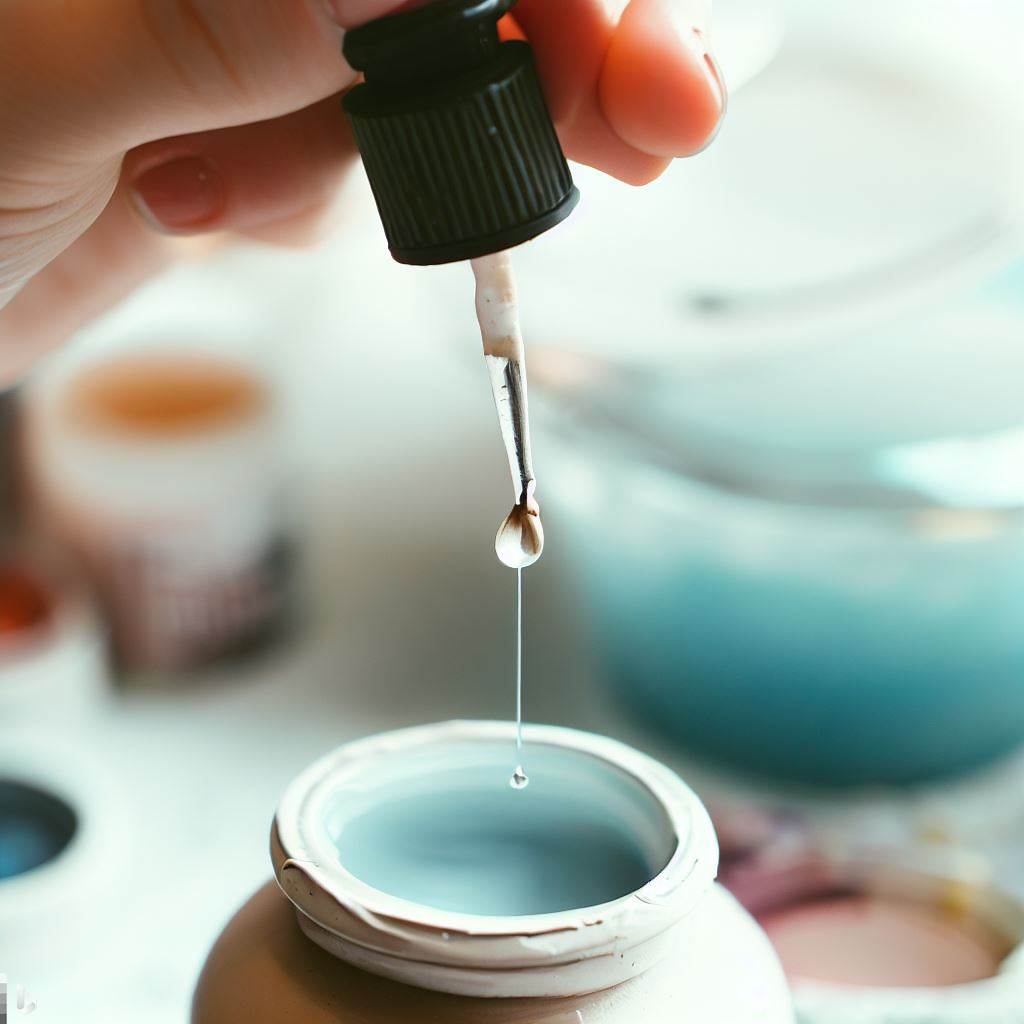
Adding water to the paint
- Add distilled water to the dried gouache paint. Use a dropper or pipette to add water to the paint a few drops at a time. Be careful not to add too much water, as this can cause the paint to become too thin.
- Mix the water and gouache paint together with a paintbrush. Stir the paint until it is smooth and creamy. If the paint is still too thick, add a few more drops of water and mix again.
- Test the paint. Once the paint is mixed, test it on a piece of paper to see if it has the right consistency. If it is too thin, add more dried gouache paint. If it is too thick, add more water.
Tips and tricks
- Use distilled water to prevent contamination and ensure the paint reactivates properly.
- Avoid using too much water, as this can cause the paint to become too thin and lose its opacity.
- Mix the paint well to ensure that the water and pigment are evenly distributed
Method 2; Using Glycerin
Glycerin is a colorless, odorless, viscous liquid that has a high boiling point and low toxicity. It is a common ingredient in many skincare products, and it can also be used to reactivate gouache. Glycerin is an excellent alternative to water, especially if you want to avoid adding too much moisture to the paint.
Steps to follow:
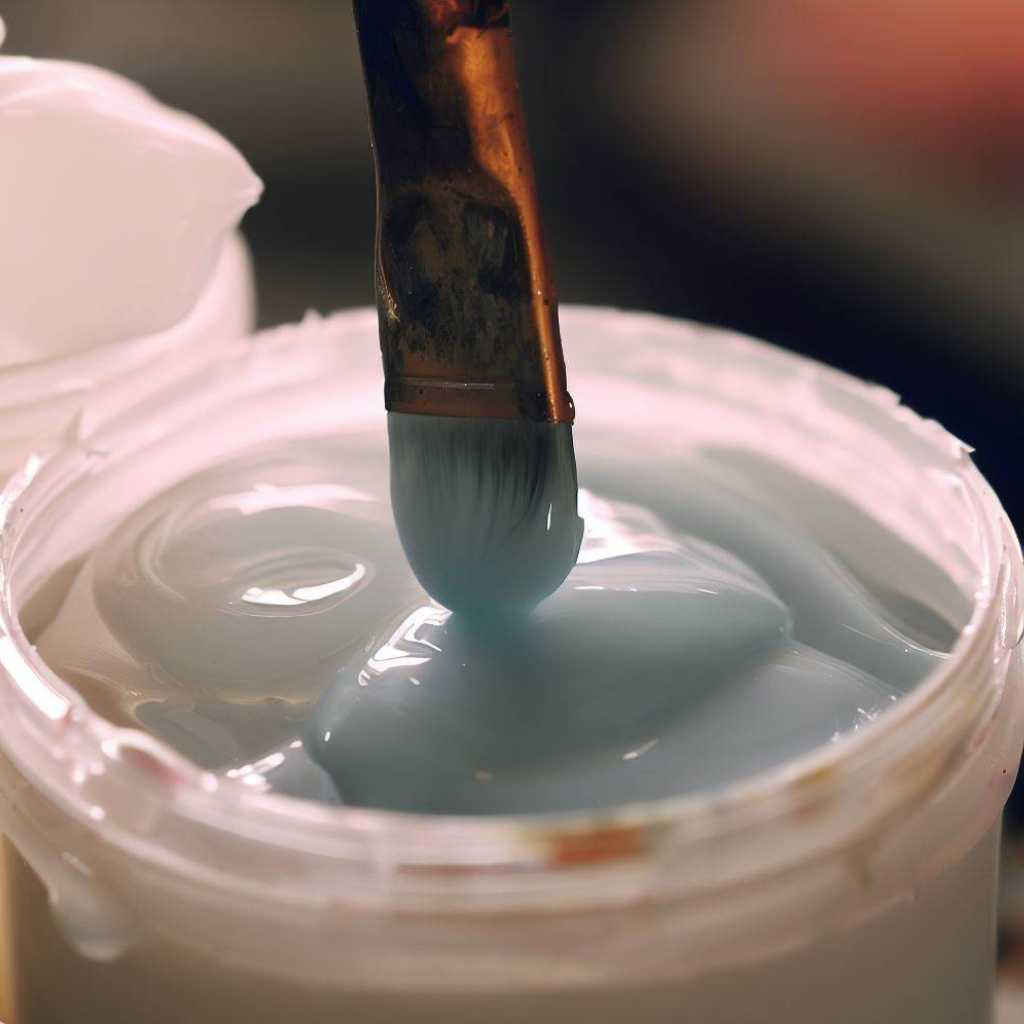
Mixing glycerin
- Start by adding a small amount of glycerin to your dried gouache. Begin with a few drops and increase the amount if needed.
- Mix the glycerin and gouache thoroughly. You can use a palette knife or a brush to mix the two together.
- The glycerin will start to loosen up the dried gouache, and you will notice that the paint becomes more workable. Keep mixing until the paint reaches the consistency you desire.
- If the gouache is still too dry, you can add more glycerin, but be careful not to add too much at once.
Tips and tricks:
- Always add glycerin in small amounts. It is easier to add more if needed, but if you add too much, it may become difficult to control the consistency of the paint.
- Glycerin works best with gouache that has not been dry for too long. If the gouache has been dry for an extended period, it may not be possible to reactivate it with glycerin.
- You can use a small spray bottle to spray a mixture of water and glycerin on the dried gouache. This method can be particularly effective if you have a large area of dried gouache to reactivate.
- Glycerin can be quite sticky, so be sure to clean your brushes thoroughly after using it.
Method 3: Using Gum Arabic
Gum Arabic is a natural binder that can be used to reactivate gouache. Here are the steps to follow to reactivate your gouache with Gum Arabic:
Steps to follow:
- Begin by mixing a small amount of Gum Arabic with water. Start with a ratio of one part Gum Arabic to two parts water. Mix the solution thoroughly to create a smooth consistency.
- Once the Gum Arabic solution is prepared, apply it to the dried gouache using a clean paintbrush. Use a small amount of the solution at a time, and work it into the paint with gentle strokes.

Consistency of paint
- Continue to apply the Gum Arabic solution until the gouache has reached the desired consistency. Be sure to mix the paint thoroughly after each application of the solution.
Tips and Tricks:
- Use a small amount of Gum Arabic at a time to avoid over-saturating the paint.
- Experiment with the ratio of Gum Arabic to water to find the consistency that works best for your needs.
- Be patient and take your time when reactivating gouache with Gum Arabic. It may take several applications to achieve the desired result.
- Clean your paintbrush thoroughly after use to prevent the Gum Arabic from drying onto the bristles.
Troubleshooting
Gouache is a unique medium that requires some special care, and knowing how to troubleshoot issues will save you time, money, and frustration.
When to Give Up on Dried Gouache
While reactivating gouache is a great way to make use of dried-out paint, sometimes it just isn’t worth the effort.
If your gouache has been dried out for an extended period of time or has hardened to the point where it is difficult to mix or apply, it may be time to give up on reactivating it.
Attempting to revive extremely old or heavily dried gouache can also result in an uneven consistency, making it difficult to achieve the desired results in your artwork.
How to Store Gouache to Prevent Drying?
To avoid the need to reactivate your gouache in the first place, proper storage is key. One common mistake is leaving the cap off the paint tubes or jars, which allows air to dry out the paint.
Make sure to always tightly seal your gouache containers after use. Storing your gouache in a cool, dry place away from direct sunlight can also help to prevent the paint from drying out too quickly.
Preventing the Need to Reactivate Gouache
Aside from proper storage, there are a few other tips you can follow to help prevent the need to reactivate your gouache.
- One is to only use small amounts of paint at a time, as this can help to reduce the amount of air that comes into contact with the remaining paint.
- Another tip is to add a few drops of water or glycerin to your gouache before storing it, as this can help to keep it moist and easier to work with when you’re ready to use it again.
With a little bit of foresight and care, you can reduce the likelihood of having to go through the reactivation process and keep your gouache paint fresh and ready to use whenever inspiration strikes.
Additional Tips and Tricks
As you gain experience with gouache, you may discover some alternative ways to use it, and there are a few more tips and tricks you can try to get the most out of your paint.
Alternative Ways to Use Dried Gouache
If you find that reactivating your dried gouache is still leaving you with a less-than-ideal consistency, there are still ways to use it.

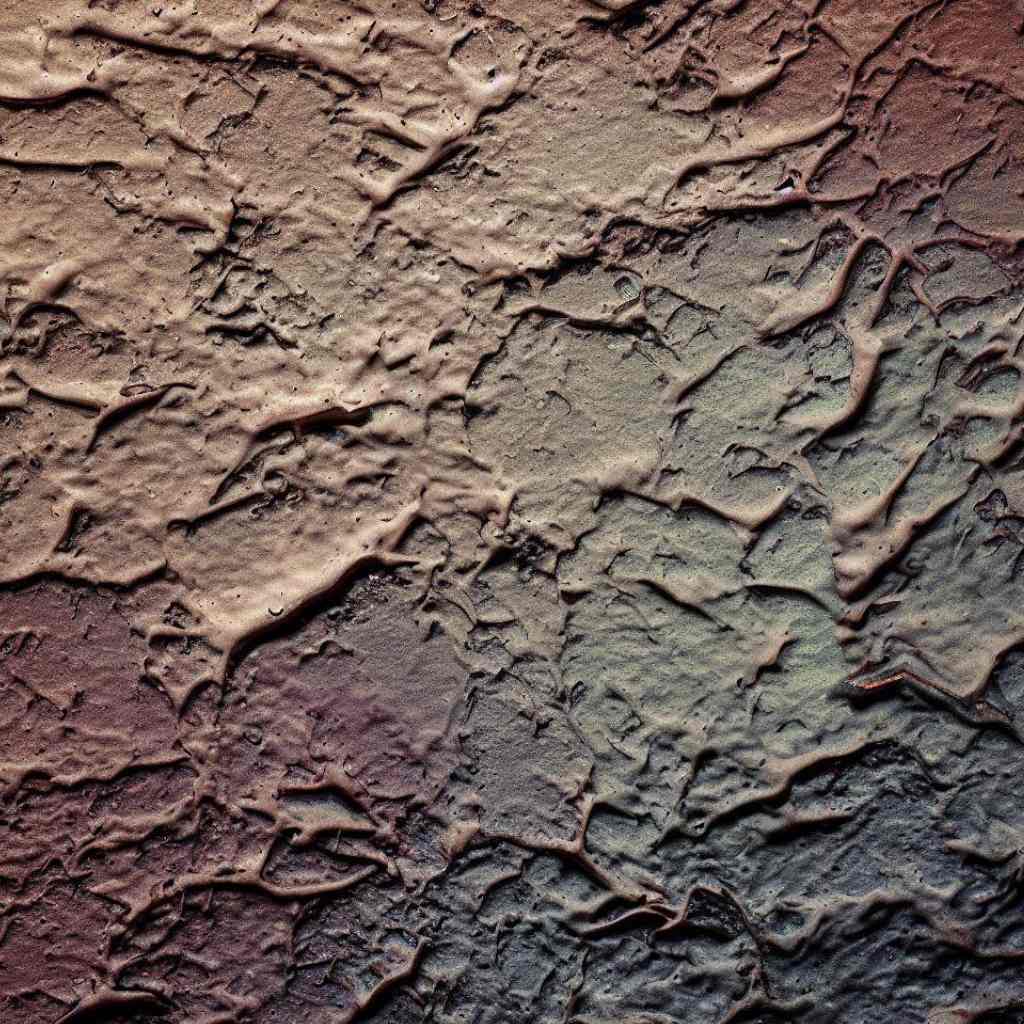
Textured and effects using dried gouache
You can create unique textures and effects with your dried gouache, such as using it to create rough, grainy surfaces. Simply mix a small amount of dry gouache with some water, and apply it to your surface with a stiff brush or palette knife.
Another technique to try is to use your dried gouache as a resist. Apply it to your surface in the areas where you want to prevent paint from adhering, and then paint over the top with wet gouache.
When the paint dries, you can remove the dried gouache with a brush or your fingers, revealing the untouched surface beneath.
Mixing Colors with Reactivated Gouache
Reactivated gouache can be a bit tricky to work with when it comes to mixing colors, as it can be difficult to achieve a consistent color throughout your paint.
One way to overcome this is to mix your colors with the reactivated gouache on a separate palette or surface, rather than in the original gouache containers.
This will help you achieve a more consistent mix, and also prevent you from contaminating the original paint containers.
Best Surfaces to Use with Gouache
Gouache can be used on a variety of surfaces, but it works best on absorbent surfaces, such as watercolor paper or illustration board. You can also use it on canvas, but it may require more layers to achieve the desired opacity.
When using gouache on paper, it’s important to choose a high-quality, acid-free paper to prevent it from yellowing or deteriorating over time.
Cold-pressed watercolor paper is a good choice, as it has a slightly textured surface that can help the gouache adhere better.
FAQs
- How long does it take to reactivate gouache?
The amount of time it takes to reactivate gouache can depend on a few different factors, including the age of the paint and the consistency of the dry paint. In general, gouache that has been sitting for a longer period of time will take longer to reactivate. If the paint has only been sitting for a short time or is only slightly dried out, it may only take a few minutes for the water to fully soak into the paint and make it usable again. However, if the paint has been sitting for an extended period of time or has dried out significantly, it may take longer to fully reactivate.
- Can I mix different reactivation methods?
While it is possible to mix different reactivation methods, it is generally not recommended as it can affect the overall quality and consistency of the paint. It is best to choose one method of reactivation and stick with it for the best results.
- Can I store reactivated gouache for later use?
Yes, you can store reactivated gouache for later use. It is best to store it in an airtight container to prevent it from drying out again. Keep in mind that the paint may need to be reactivated again before use, especially if it has been sitting for an extended period of time.
- Can I use a hairdryer to speed up the reactivation process?
While it is possible to use a hairdryer to speed up the reactivation process, it is generally not recommended as it can cause the paint to dry out even more quickly or become overheated. This can affect the overall quality and consistency of the paint.
- Is it possible to over-reactivate gouache?
Yes, it is possible to over-reactivate gouache by adding too much water or using a reactive agent that is too strong. This can cause the paint to become too thin or watery and can affect its ability to adhere to the surface. It is best to add water or a reactive agent gradually and mix thoroughly to ensure that the paint is fully reactivated without becoming over-reactivated.
Wrapping up
And that’s a wrap, folks! We’ve covered everything you need to know about how to reactivate gouache and bring your dried-out paints back to life.
By now, you should feel confident in your ability to restore your favorite colors and continue creating beautiful works of art.
Remember, the key is to use the right materials, follow the steps carefully, and be patient as you work through the process. So go ahead and give it a try! With a little practice and some persistence, you’ll be a pro at reviving your gouache paints in no time.
And who knows, you might just surprise yourself with what you’re able to create with your newly reactivated paints. So what are you waiting for? Get out there and start painting like Bob Ross!

